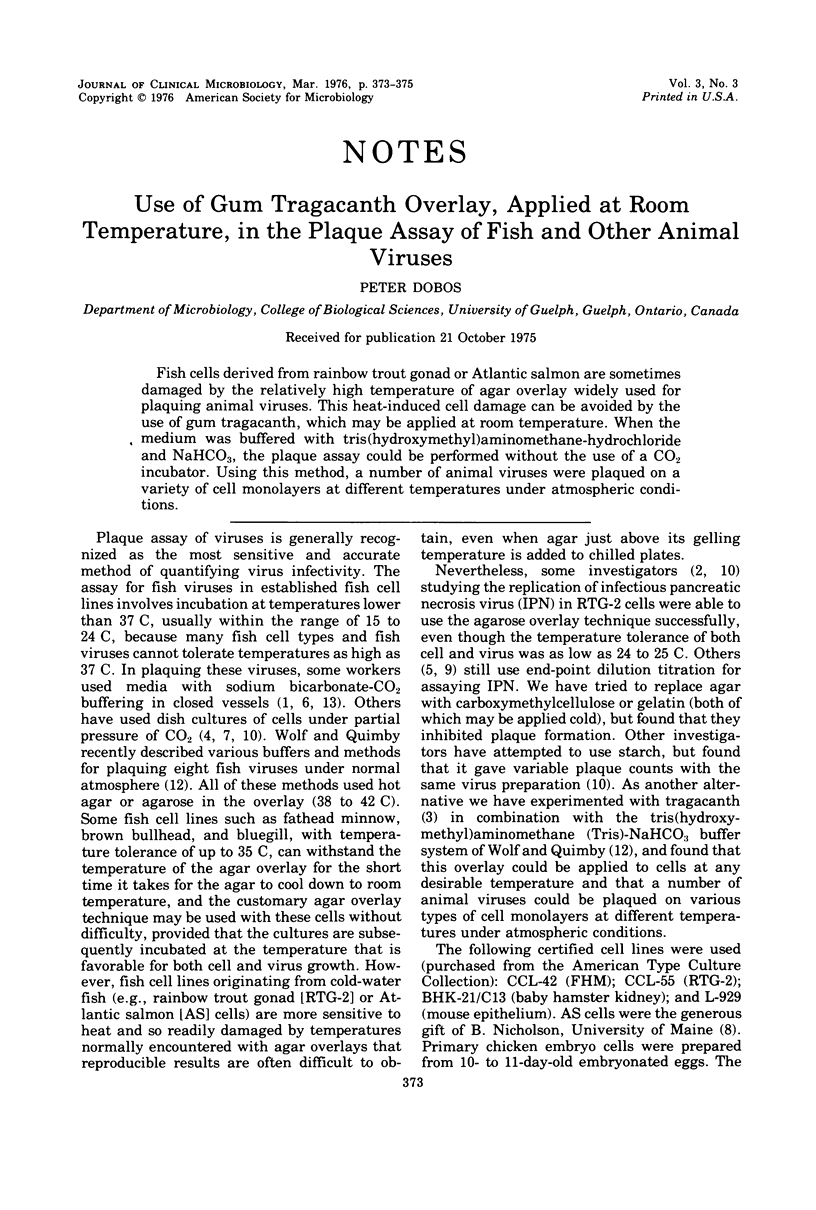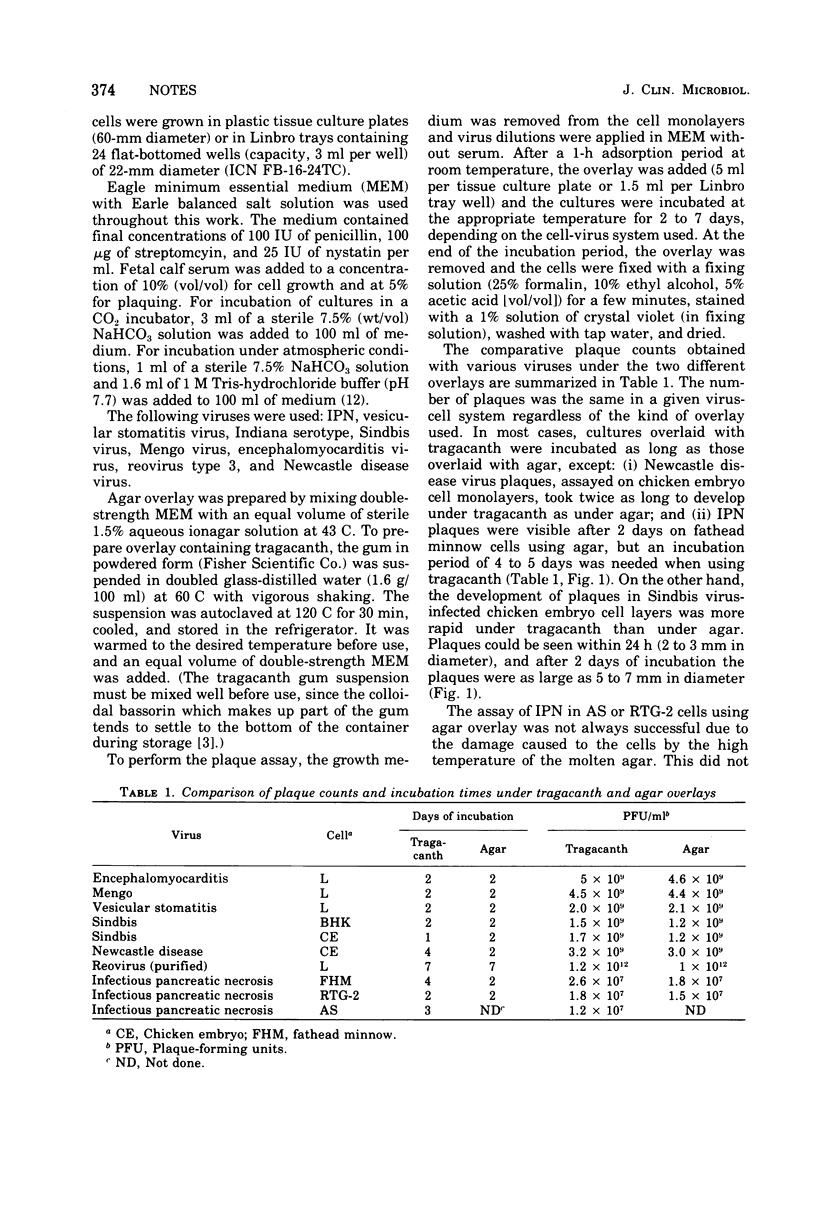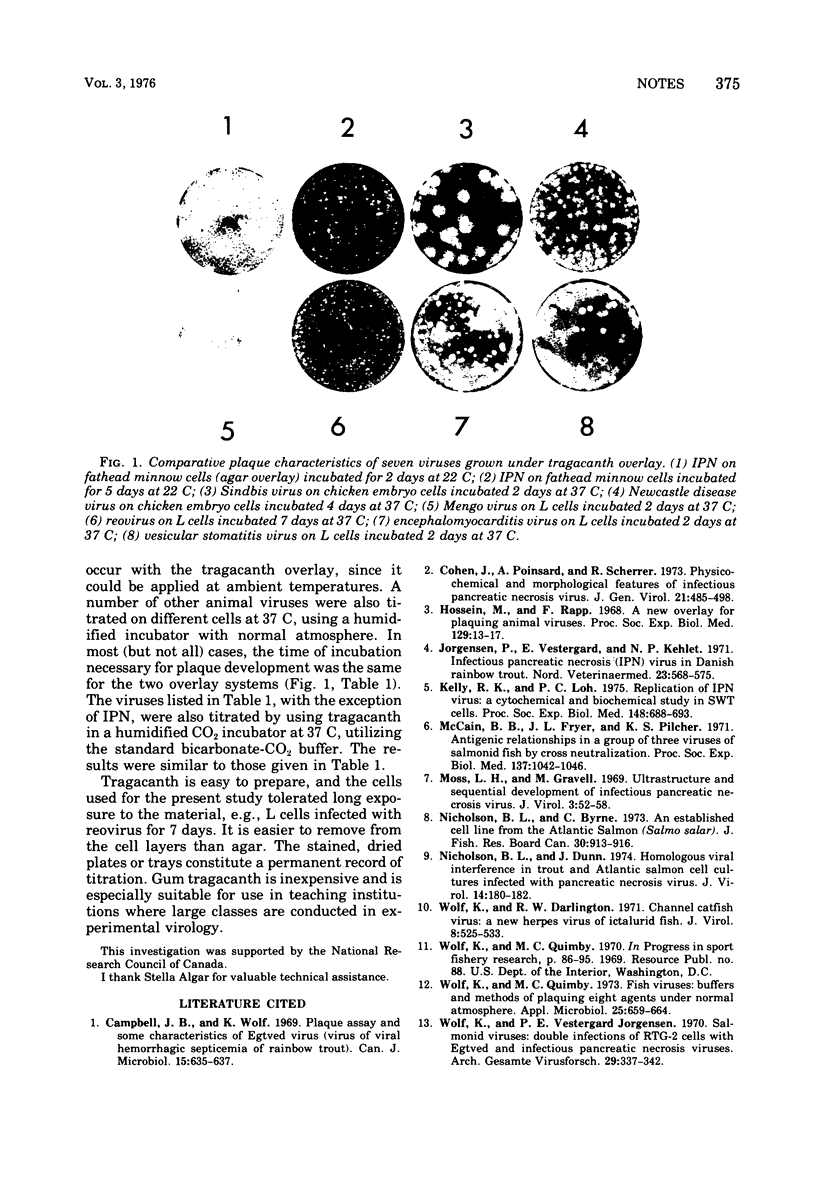Abstract
Fish cells derived from rainbow trout gonad or Atlantic salmon are sometimes damaged by the relatively high temperature of agar overlay widely used for plaquing animal viruses. This heat-induced cell damage can be avoided by the use of gum tragacanth, which may be applied at room temperature. When the medium was buffered with tris(hydroxymethyl)aminomethane-hydrochloride and NaHCO3, the plaque assay could be performed without the use of a CO2 incubator. Using this method, a number of animal viruses were plaqued on a variety of cell monolayers at different temperatures under atmospheric ocnditions.
Full text
PDF


Images in this article
Selected References
These references are in PubMed. This may not be the complete list of references from this article.
- Campbell J. B., Wolf K. Plaque assay and some characteristics of Egtved virus (virus of viral hemorrhagic septicemia of rainbow trout). Can J Microbiol. 1969 Jun;15(6):635–637. doi: 10.1139/m69-108. [DOI] [PubMed] [Google Scholar]
- Cohen J., Poinsard A., Scherrer R. Physico-chemical and morphological features of infectious pancreatic necrosis virus. J Gen Virol. 1973 Dec;21(3):485–498. doi: 10.1099/0022-1317-21-3-485. [DOI] [PubMed] [Google Scholar]
- Kelly R. K., Loh P. C. Replication of IPN virus: a cytochemical and biochemical study in SWT cells. Proc Soc Exp Biol Med. 1975 Mar;148(3):688–693. doi: 10.3181/00379727-148-38611. [DOI] [PubMed] [Google Scholar]
- McCain B. B., Fryer J. L., Pilcher K. S. Antigenic relationships in a group of three viruses of salmonid fish by cross neutralization. Proc Soc Exp Biol Med. 1971 Jul;137(3):1042–1046. doi: 10.3181/00379727-137-35724. [DOI] [PubMed] [Google Scholar]
- Mirchamsy H., Rapp F. A new overlay for plaquing animal viruses. Proc Soc Exp Biol Med. 1968 Oct;129(1):13–17. doi: 10.3181/00379727-129-33237. [DOI] [PubMed] [Google Scholar]
- Moss L. H., 3rd, Gravell M. Ultrastructure and sequential development of infectious pancreatic necrosis virus. J Virol. 1969 Jan;3(1):52–58. doi: 10.1128/jvi.3.1.52-58.1969. [DOI] [PMC free article] [PubMed] [Google Scholar]
- Nicholson B. L., Dunn J. Homologous viral interference in trout and Atlantic salmon cell cultures infected with infectious pancreatic necrosis virus. J Virol. 1974 Jul;14(1):180–182. doi: 10.1128/jvi.14.1.180-182.1974. [DOI] [PMC free article] [PubMed] [Google Scholar]
- Wolf K., Darlington R. W. Channel catfish virus: a new herpesvirus of ictalurid fish. J Virol. 1971 Oct;8(4):525–533. doi: 10.1128/jvi.8.4.525-533.1971. [DOI] [PMC free article] [PubMed] [Google Scholar]
- Wolf K., Quimby M. C. Fish viruses: buffers and methods for plaquing eight agents under normal atmosphere. Appl Microbiol. 1973 Apr;25(4):659–664. doi: 10.1128/am.25.4.659-664.1973. [DOI] [PMC free article] [PubMed] [Google Scholar]
- Wolf K., Vestergård Jorgensen P. E. Salmonid viruses: double infection of RTG-2 cells with Egtved and infectious pancreatic necrosis viruses. Arch Gesamte Virusforsch. 1970;29(4):337–342. doi: 10.1007/BF01249888. [DOI] [PubMed] [Google Scholar]



